
The Professor reviews the Bluetti AC60 600w LFP lithium power station with 800wh B80 modular expansion battery. Is it the best solar generator under 1000w?
WATCH IT HERE
Intro:
-
The Bluetti EB3A 600w power station was a big hit last year when it launched offering up one of the smallest UPS solar generators on the market. There is now a new & improved replacement that adds IP65 water resistance and battery expandability up to 2000wh. It’s called the Bluetti AC60 but is it any good? Let’s find out!
Quirks & Features:
-
Battery Capacity/Tech/Cycles: 403wh LiFePO4 rated 3000+ cycles to 80%
-
Size/Weight: approx 11x9x10 inches and weighs around 19lbs
-
Design/Display: The AC60 is IP65 rated water resistant which means it can handle low powered water spray from any direction, display is a color LCD with input output watts, time to charge discharge, and battery soc with icon
-
Inverter Size/Type (constant/peak) and #outlets: 600w pure sine inverter with two outlets and “power lifting” up to 1200w for some appliances
-
Ways To Charge (and times for each): AC charging up to 600w in turbo mode will charge from 0-80% in 45 mins or to full in 1.2 hours. 12v/24v charging in 7hrs by 12v or 3.5hrs by 24v. Will top up from 0-100% with 200w of solar from 12-28v in 3.5 hours under ideal conditions.
-
12v Output Types: Single 12v cigarette lighter accessory socket rated 10A at a regulated 13.6v
-
USB Output Types: Pair of USB ports good for charging your dinosaurs and a single 100w USB-C PD output
-
Other Features: Wireless 15w quick charge pad and a lantern style light on the back. It also offers battery expandability up to 2000wh with the optional B80 battery pack which we’ll demo in a bit. This product also supports Bluetti’s mobile app for wireless access.
-
Warranty: Bluetti is offering a class leading 6 year manufacturer’s warranty on this product
Testing
-
DC Battery Capacity Test (time lapse): 357wh/403 for an impressive 89%
-
AC Battery Capacity Test (time lapse): Almost identical 350wh/403 or 87%
-
These numbers are above average for Bluetti and across the industry in general
-
Sine wave check under load: 120v/60hz
-
Inverter capacity test (max): 1000w <5s
-
Cooling ability test (rated @ 5mins): 600w pass; 700w <1m
-
Inverter fan noise db: 48
-
Max Charge Rate @ watts/volts: AC 600w turbo / 256w std / 160w silent; DC 12v 95w, 18v 160w, 30v 200w
-
Charging fan noise db: 48
-
Simultaneous charging ability: yes, no speed boost, prioritizes solar
-
Pass thru / UPS: Pass 20ms laptop test
-
DC Output(s) Max Rate: 10A 13.0v
-
12v output(s) regulated: 13.6v
-
USB output rate check: 100w pass
-
Wireless/other output: 12w fast charge
-
Amp interference test: pass
-
Light demo: Has SOS
-
APP/solar test: demo
My Opinion :
-
Bluetti has knocked it out of the park with the AC60. They’ve covered every base from super fast charging, to battery expansion, to offering a clean inverter in a quiet package that includes 100w PD, a light, an app, and wireless charging, and a rock solid UPS feature. They did this and also managed almost 90% usable battery capacity. Let’s not forget it’s also IP65 water resistant to boot with an unheard of 6 year warranty.
-
My only gripe … it should have a 1000w inverter for this size and weight. This thing is significantly larger and heavier than the outgoing EB3A. In fact, it’s one pound shy of twice the weight. I’m not sure why they would offer a unit that could expand to over 2000wh with such a limited 600w inverter. Yes, you can “power lift” to 1200w but this can only be used for resistive loads like coffee makers and hot plates. It’s not going to start a full size fridge or a window air conditioner unless it is a fully mechanical 5000 BTU. It’s certainly not going to run a compact microwave oven. In the real world, 600w is not very much and most kitchen appliances are going to exceed that. It will run most PC computers, TV’s, fans, lights, small coffee makers, and potentially a 3qt instant pot. Just don’t expect it’s going to run everything in your cabin or RV.
Pricing and competition
-
Product Price with current discounts:
-
At the time of this recording which is about 12 hours from product launch, I have been unable to get any pricing information from Bluetti. They did promise a discount at launch so if you want to know the final price you’ll need to click the link in the description of this video and enter in the discount code provided. If you don’t see a discount code it means that it hasn’t been activated yet.
-
-
Main Competitor:
-
The only real competition is going to be from the Ecoflow River 2 series. They offer a lot of the same features although at a higher price, and without the water resistance, 6 year warranty, or battery expandability. Okay, nevermind. The AC60 is really in a class by itself and I’m not going to compare it to a NMC product like a Jackery. That’s like pitting a Model T up against a new Corvette.
-
-
Who’s It Aimed At?:
-
Who is this product for? It’s mostly for those needing portable power at home or when camping. It can be used to run 12v fridges on road trips or to power the kid’s gaming console. It can provide basic backup power during a blackout by keeping some of your essentials going. Just don’t expect it to power a full size fridge, air conditioner, or heater. For those bigger jobs look at the AC200Max or larger from Bluetti. I have reviews on all their products. You can find them easily by searching YouTube for “hobotech bluetti”.
-
-
Recommended Solar Panel Type/Size:
-
I’m going to recommend Bluetti’s own 200w PV200 portable panel for the AC60. You can get it in a bundle on their website. Otherwise, you can use any 200w panel you like as long as it has MC4 connectors and the adapter cable is supplied with the AC60.
-
If you want a cheaper more permanent solution, I’d recommend the BougeRV 180w or 200w panels which can be found on hobotech.tv/amazon under “solar kits”.
-
-
If you’re interested, you can check it out here https://gohobo.io/ac60 use code HOBOAC60 for discount!
Bluetti AC60 LFP 600w
UPS Solar Generator
Use code HOBOAC60
GET IT AT BLUETTI
EcoFlow Wave 2
Solar A/C & Heater
Use code EFHBTECH8
GET IT AT ECOFLOW
GET IT AT AMAZON
Lectric XP 3.0
1000w Folding E-bike
GO TO LECTRIC
ECOFLOW GLACIER
Ice Maker Refrigerator
Use code HBGLACIER
GO TO ECOFLOW
GROWATT INFINITY 1300
1800w LFP Power Station
Use code HOBOFANS
GO TO GROWATT
ICECO APL55 58qt
Multi Zone Fridge
Use code HOBOTECH
GO TO ICECO
EcoFlow River 2 Pro
800w UPS Generator
Use code EFHOBOTECH8
GO TO ECOFLOW
Jackery 3000 Pro
3000w UPS Generator
Use code HOBOTECH2023
GO TO JACKERY
Growatt Vita 550
600w Solar Generator
Use code OLHOBOFANS
GO TO GROWATT
Growatt Infinity 1500
2000w Solar Generator
Use code HOBOSFANS
GO TO GROWATT
Bluetti PV420 420w
Portable Solar Panel
Use code HOBOPV420
GO TO BLUETTI
Dr. Prepare 100ah
LiFePO4 PowerMax Battery
Use code HOBO7
GO TO DR PREPARE
Power Queen 190ah
LiFePO4 Drop In Battery
Use code HOBO9 for $605 offer
GO TO POWER QUEEN
Vigorpool Captain 1200
UPS LFP Parallel SoGen
GO TO VIGORPOOL
ZENDURE SBP 2000
SOLAR GENERATOR
$100 OFF code HOBOSBP
GO TO ZENDURE
BLUETTI EB3A UPS
SOLAR GENERATOR
Use code HOBOEB3A
GO TO BLUETTI
RUNHOOD POWER
MODULAR GENERATOR
GO TO RUNHOOD
ECOFLOW WAVE
BATTERY POWERED A/C
Use code HOBOTECHWAVE
GO TO ECOFLOW
RENOGY LYCAN 5000
4800wh UPS Waterproof
Solar Generator
12% off with code HOBOLYCAN1
GO TO RENOGY
—
GOT RENOGY SOLAR PANELS?
Renogy 450w solar panels: https://hobos.cc/ren450
Renogy 175w solar panels: https://hobos.cc/ren175
Use code HOBOPANEL for 10% off
ACOPOWER
LiON Mini Fridge
$226 Super Early Bird!
GO TO ACOPOWER
BougeRV 1200w
1100wh SoGen
$719 code HOBOTECH10
GO TO BOUGERV
Jackery 2000 Pro
2200w UPS SoGen
$2069 code HOBOTECH
GO TO JACKERY
ICECO JPPRO 12v Fridge
Only $479 for a limited time!
GO TO ICECO PAGE
PECRON E3000 3108wh
Only $1899 for a limited time!
Use code HOBOE3000 until May 7th
GO TO PECRON SITE
BIGBLUE CELLPOWA 2500w
Only $1099 for a limited time!
GO TO BIGBLUE SITE
BLUETTI EP500 PRO
See the review?
GO TO BLUETTI POWER SITE
//-AC300 & B300 Deals-//
B300 (solo) Use code HOBOB300 https://bit.ly/3hyROWi
AC300+B300 Use code HOBOAC3001B https://bit.ly/398DDm1
AC300+2xB300 Use code HOBOAC3002B https://bit.ly/3Aq3OAs
AC300+2xB300+3xPV200 Use code HOBOAC300COMBO2 https://bit.ly/3tJHFuD
2xAC300+2xB300+P030A Use code HOBOAC300COMBO1 https://bit.ly/3lpWoXU
AC300+4xB300 Use code HOBOAC3004B https://bit.ly/3tVd1Pb
2xAC300+4xB300+P030A Use code HOBOAC300COMBO3 https://bit.ly/2Xmd8XL
2xAC300+4xB300+6xPV200+P030A Use code HOBOAC300COMBO4 https://bit.ly/2XmDDfp
//-AC200Max & B230 Deals-//
B230 (solo) Use code HOBOB230 https://bit.ly/3EiO4Sk
AC200MAX Use code HOBO200MAX https://bit.ly/3EiOBni
AC200Max+B230 Use code HOBOMAXB230 https://bit.ly/3znZzEB
AC200Max+3PV200 Use code HOBOMAX3PV2000 https://bit.ly/39b8lLs
AC200Max+2*B230 Use code HOBOMAX2B230 https://bit.ly/3k9D7ue
AC200Max+2*B230+3*PV200 Use code HOBOMAXCOMBO https://bit.ly/3kb2A6w
//-AC200P-//
AC200P Use code HOBO200P https://bit.ly/3JSgGDR
AC200P+3xPV120 Use code AC200PV120 https://bit.ly/3555Yes
AC200P+3xPV200 Use code AC200PV200 https://bit.ly/3t9pPBg
//-UNDER 1000w-//
AC50S Use code HOBO50 (or HOBO50OR) https://bit.ly/3skt7me
EB55 Use code HOBO55 https://bit.ly/3hfqw6x
EB70S Use code HOBO70S Use code HOBO100 https://bit.ly/3C311iF
EB150 Use code HOBO150 https://bit.ly/3pgyr85
EB240 Use code HOBO3000 https://bit.ly/3Ka7drZ
EB55+PV120 Use code PVEB55 https://bit.ly/3BMIpDn
EB70S+PV200 Use code EB70S30 https://bit.ly/3sfYu1c
EB150+2xPV120 Use code EB150PV120 https://bit.ly/3t7PmuM
EB240+2xPV120 https://bit.ly/33OMk61
//-SOLAR PANELS-//
PV120 Use code HOBO100 https://bit.ly/3LZXAO3
PV200 Use code HOBO200 https://bit.ly/3vgmjrq
PV350 Use code HOB350 https://bit.ly/3hIr1Gs
//-ACCESSORIES-//
DC Charging Enhanncer(D050S) Use code HOBOENHANCER https://bit.ly/2Xs3mnd
Fusion Box Pro(P030A)Use code HOBOFUSION https://bit.ly/3AcUQqs
PV voltage step down module(D300S) Use code HOBOD300S https://bit.ly/3nByuv1
D050S+3*PV200+B230 Use code HOBOENHCOMBO1 https://bit.ly/3nzNKJ9
D050S+3*PV200+B300 Use code HOBOENHCOMBO2 https://bit.ly/2XhAuh1
–ALLPOWERS MONSTER PRO–
5000wh UPS LFP SOGEN
Only $3399 for a limited time!
That’s 67 cents per watt hour! Cheap!
GO TO ALLPOWERS SITE
OUPES 1200w Solar Generator
Only $765 for a limited time!
Use Code HOBOTECH for 15% off SITE WIDE
GO TO OUPES SITE
GET THE BLUETTI AC200P at the LOWEST PRICE EVER!
BLUETTI AC200P 2000wh LiFePO4
Only $1498 from BLUETTI
https://bit.ly/2T3xMJK
Use Code HOBO200P
or purchase from Amazon + tax support & Bezos Yacht Fund
PLEASE SUPPORT US BY BUYING DIRECT FROM BLUETTI
BEZOS DOESN’T NEED ANOTHER YACHT!
MONTEK X-1000 Water Resistant 1000w SoGen
MONTEK X-1000 (with 80w panel): http://shrsl.com/3cm8o use code HOBO1000 for $100 off!
ACOPower LiONCooler Pro Solar Fridge
https://bit.ly/3Dp5hYH
ANKER 521 256wh LFP Power Station
https://amzn.to/3nZUT51
BLUETTI AC300
3000w Solar Generator
“BEST SOGEN AVAILABLE IN 2021!”
ON SALE NOW!
Use the codes / links below!
//-AC300 & B300 Deals-//
B300 (solo) Use code HOBOB300 https://bit.ly/3hyROWi
AC300+B300 (review bundle) Use code HOBOAC3001B https://bit.ly/398DDm1
AC300+2xB300 Use code HOBOAC3002B https://bit.ly/3Aq3OAs
AC300+2xB300+3xPV200 Use code HOBOAC300COMBO2 https://bit.ly/3tJHFuD
2xAC300+2xB300+P030A Use code HOBOAC300COMBO1 https://bit.ly/3lpWoXU
AC300+4xB300 Use code HOBOAC3004B https://bit.ly/3tVd1Pb
2xAC300+4xB300+P030A Use code HOBOAC300COMBO3 https://bit.ly/2Xmd8XL
2xAC300+4xB300+6xPV200+P030A Use code HOBOAC300COMBO4 https://bit.ly/2XmDDfp
//-AC200Max & B230 Deals-//
B230 (solo) Use code HOBOB230 https://bit.ly/3EiO4Sk
AC200MAX Use code HOBO200MAX https://bit.ly/3EiOBni
AC200Max+B230 Use code HOBOMAXB230 https://bit.ly/3znZzEB
AC200Max+3PV200 Use code HOBOMAX3PV2000 https://bit.ly/39b8lLs
AC200Max+2*B230 (review bundle) Use code HOBOMAX2B230 https://bit.ly/3k9D7ue
AC200Max+2*B230+3*PV200 Use code HOBOMAXCOMBO https://bit.ly/3kb2A6w
//-Other Models-//
AC200P 2000wh https://bit.ly/2T3xMJK use code HOBO200P
EB70 700w LiFePO4 https://bit.ly/2SfeEIK use code HOBO70
EB55 700w LiFePO4 https://bit.ly/3CmRHFq use code HOBO55
AC50s 500wh https://bit.ly/3uNec1O use code HOBO50
AC50s (orange) https://bit.ly/2T1TUEx use code HOBO50OR
EB240 2400wh https://bit.ly/3cjMseB use code HOBO3000
EB150 1500wh https://bit.ly/3plw3vL use code HOBO150
//-Solar Panels-//
BLUETTI PV200 200w Solar Panel https://bit.ly/31b1n8o use code HOBO200
BLUETTI PV120 120w Solar Panel https://bit.ly/3Emrtn8 use code HOBO100
//-Accessory Deals-//
DC Charging Enhanncer(D050S) Use code HOBOENHANCER https://bit.ly/2Xs3mnd
Fusion Box Pro(P030A) Use code HOBOFUSION https://bit.ly/3AcUQqs
PV voltage step down module(D300S) Use code HOBOD300S https://bit.ly/3nByuv1
D050S+3*PV200+B230 Use code HOBOENHCOMBO1 https://bit.ly/3nzNKJ9
D050S+3*PV200+B300 Use code HOBOENHCOMBO2 https://bit.ly/2XhAuh1
HIBOOST BOOSTERS!
-> https://bit.ly/3DLf0Kn <-
Use code HOBO20 for 20% off the OTW, RV, and Car boosters.
Use code HOBO15ALL for 15% off everything else SITE WIDE! (including home boosters!)
NEW BLUETTI AC200Max !
AC200Max: use code HOBO200MAX https://bit.ly/3mjdKIa
AC200Max+B230: use code HOBOMAXB230 https://bit.ly/3xZJCUg
AC200Max+2*B230: use code HOBOMAX2B230 https://bit.ly/3z3L8Gh
AC200Max+2*B230+600w solar: use code HOBOMAXCOMBO https://bit.ly/3D1SEUr
AC200Max+600w solar: use code HOBOMAX3PV2000 https://bit.ly/2WbTMnS
BROWSE OTHER DEALS: https://bit.ly/3ydwhId
SUNGOLDPOWER 130w v.2 Suitcase Kit
is BACK !
Use code HOBOTECH at checkout
GET IT AT SUNGOLDPOWER
Watch the original V.1 review video HERE
Amazon (no discount): https://amzn.to/3iJFRht
JACKERY EXPLORER 1000
GET IT AT JACKERY (save tax)
use code HOBOTECH at checkout!
Amazon: https://amzn.to/38TEJiR
CANADA https://amzn.to/3d7ll5g
PLEASE SUPPORT US AND NOT BILLIONAIRES BY BUYING DIRECT!
ECOFLOW DELTA PRO
3600w LiFePO4 UPS Power Station
CHECK IT OUT HERE
ICECO Refrigerators
->CLICK HERE for BEST DEALS!<-Use code HOBOTECH at checkout!
BOUGERV DEALS!
BOUGERV 180w Solar Panels
Use code HOBOTECH at checkout for 12% off the ENTIRE Solar Catalog!
Get BOUGERV 180 WATT SOLAR PANELS HERE
BougeRV Cheap REFRIGERATORS!
Use code HOBOTECH20 for 20% off all models!
53qt use code HOBOTECH90 for $90 off!
BUY DIRECT FROM BOUGERV
Wanna buy Bezos another Yacht instead?
53qt (Canada) https://amzn.to/332dgeX use code V7DIVCAB
The 5100wh Home Backup BEAST!
BLUETTI EP500 / EP500 PRO
GET IT NOW
JACKERY EXPLORER 1500
GET IT AT JACKERY (save tax)
Amazon +tax: https://amzn.to/3sUvbyU
PLEASE SUPPORT US AND NOT BILLIONAIRES BY BUYING DIRECT!
JACKERY SG1500 + 4x100w Panels
GET IT AT JACKERY (save tax)
on Amazon +tax: https://amzn.to/3rQCFld
PLEASE SUPPORT US AND NOT BILLIONAIRES BY BUYING DIRECT!
BLUETTI EB70 700w Solar Generator
Use Code HOBO70 for $100 off
GET IT AT BLUETTI (save tax)
Only red & gray available. Mint green is sold out.
PLEASE SUPPORT US AND NOT CORPORATE BILLIONAIRES BY BUYING DIRECT.
AMAZON TAKES UP TO 25% FROM SELLERS!
HIBOOST RV BOOSTER
GET IT AT HIBOOST
Use code HOBO20 for 20% OFF all mobile units!
JACKERY 300 Version 2.0!
Get it at the new low price of $299!
Jackery Direct (save tax) https://bit.ly/2QEQ9AB
On Amazon (+tax): https://amzn.to/3lCbbhl
PLEASE SUPPORT US BY BUYING DIRECT FROM JACKERY
BEZOS DOESN’T NEED THE HELP!
ALP 1000w Generator + Free Tank Hose
Get the ALP in several color choices for $499
1) Add generator to cart: ALP Generator
2) Add hose to cart: Generator Hose
3) Use code HOBO1020 at checkout!
ECOFLOW DELTA 1300 $1149
EcoFlow Store Page!
Use code EFHOBOTECH50 !
BLUETTI AC50S Solar Generator
— ->CLICK HERE for BEST DEAL!<- —
Use code HOBO50
Or buy on Amazon: https://amzn.to/36fwWg0
ICECO JP Series Refrigerators 20% OFF!
— ->CLICK HERE for BEST DEAL!<- —
Use code HOBOTECH at checkout!
HIBOOST 4G Signal Boosters
–> CLICK HERE FOR BEST DEAL! <–
Use code 2CX3RBZJ for 10% off SITE WIDE!
NEW! Use code XRMJT8WE for 20% off RV CELL BOOSTER!
ACOPOWER LiONCooler: https://www.acopower.com/
Use code HOBOTECH at checkout for 10% off!
SUNGOLDPOWER 130w Suitcase Kit is BACK
for $208! Use code 15HOBOTECH
Watch the original review video HERE
–> CLICK HERE for Amazon Page <–
Using the preferred “Best Deal” links helps support the channel!
Visit hobotech.tv/amazon for ALL products and discounts!
HOBOTECH is viewer supported. When you buy through these links we may earn an affiliate commission. As an Amazon Associate I earn from qualifying purchases.
#reviews #generators #offgrid


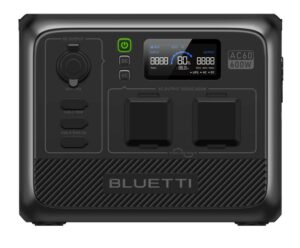














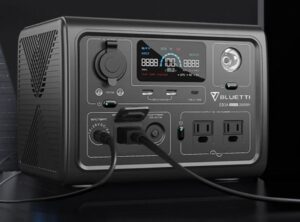







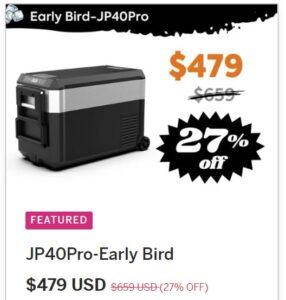












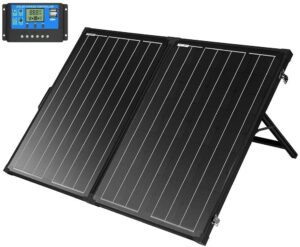









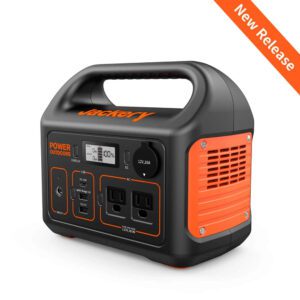


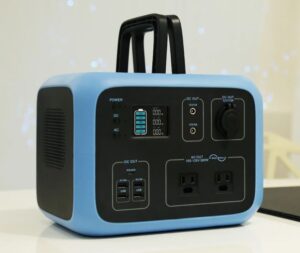







You must be logged in to post a comment.